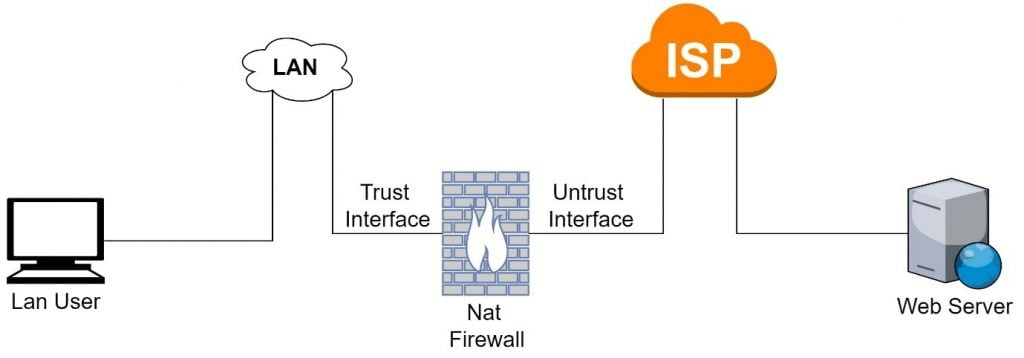What does the term Network Address Translation (NAT) mean and what are its types?
In this blog, we will learn about Network Address Translation (NAT) and its types, before we move forward into more details, let us understand what NAT exactly means?
What Is NAT
Converting an IP address into any other IP which is reachable with the destination network. NAT is used to provide communication between that network which is not reachable with each other.

Why NAT
- To provide internet access to the inside user
- To hide IP address
- Used to provide security
- To provide communication between overlapping subnets
NAT Can Be
- Private to public Ip (for internet access)
- Private to private IP (in VPN)
- Public to private IP
- Public to public IP
Whenever we translate an IP address, there are 2 types of IP address
- Real IP address: address that we want to translate
- Mapped IP address: address into which we translate real IP

Type Of NAT
- Dynamic NAT
- Dynamic PAT
- Static N
- Static PAT
- Identity NAT
- Conditional NAT (twice NAT)
1. Dynamic NAT
- Translation is not fixed (mapped IP does not fix for Real IP )
- Translation is temporary (Xlate table idle timeout is 3 hours)
- It is unidirectional (Connection cannot be initiated from outside)
- As we configure NAT, entry is not added in the translation table automatically, entry is added only when a packet is translated.
- Layer 3 information is used for translation.
- Layer 3 information is mainly in the translation table.
2. Dynamic PAT
- It is unidirectional
- Translation is temporary (Idle timeout is 30 seconds by default)
- Translation is done based on layer 3 and layer 4
- It is many to one ( multiple real IPs can be translated with a single mapped IP)
3. Static NAT
- Translation is fixed
- Translation is permanent (as we configure NAT, entry is automatically updated in the translation table, and it is permanent. No matter whether the packet is received or not.)
- It is bidirectional (connection can be initiated from inside or outside.)
4. Static PAT
- It is bidirectional
- Translation is permanent
- Layer 3 and layer 4 information is used for translation
5. Identity NAT
- Translating real IP into its IP
- This uses in VPN
- This NAT can be dynamic or static
- If we want to initiate traffic from inside, then it will be dynamic or if we want to initiate traffic from outside then static.
6. Conditional NAT
- If we want to translate real IP based on a condition, then it is known as conditional NAT.
Condition example: if the source is 10.1.1.1 and destination is 101.1.1.1 then translate it.
- Conditional can be with section 1 NAT.
Section NAT
Whenever we configure NAT then there are 3 sections.
- Section 1: Manual NAT
- Section 2: Auto NAT
- Section 3: Manual NAT with after auto keyword
Zindagi Technologies has proven to be an expert in the field of Data canter services, cloud solutions managed IT services, IT Consultant, and IT security. If you want security, Confidentiality, and integrity of your data, you can contact us. We have all its doors open to receive any solution requirements. You can reach out to us at +919773973971 and email us at [email protected].
Author
Vijay Kumar
Associate Consultant
